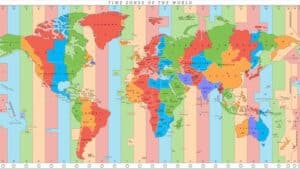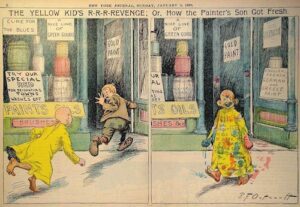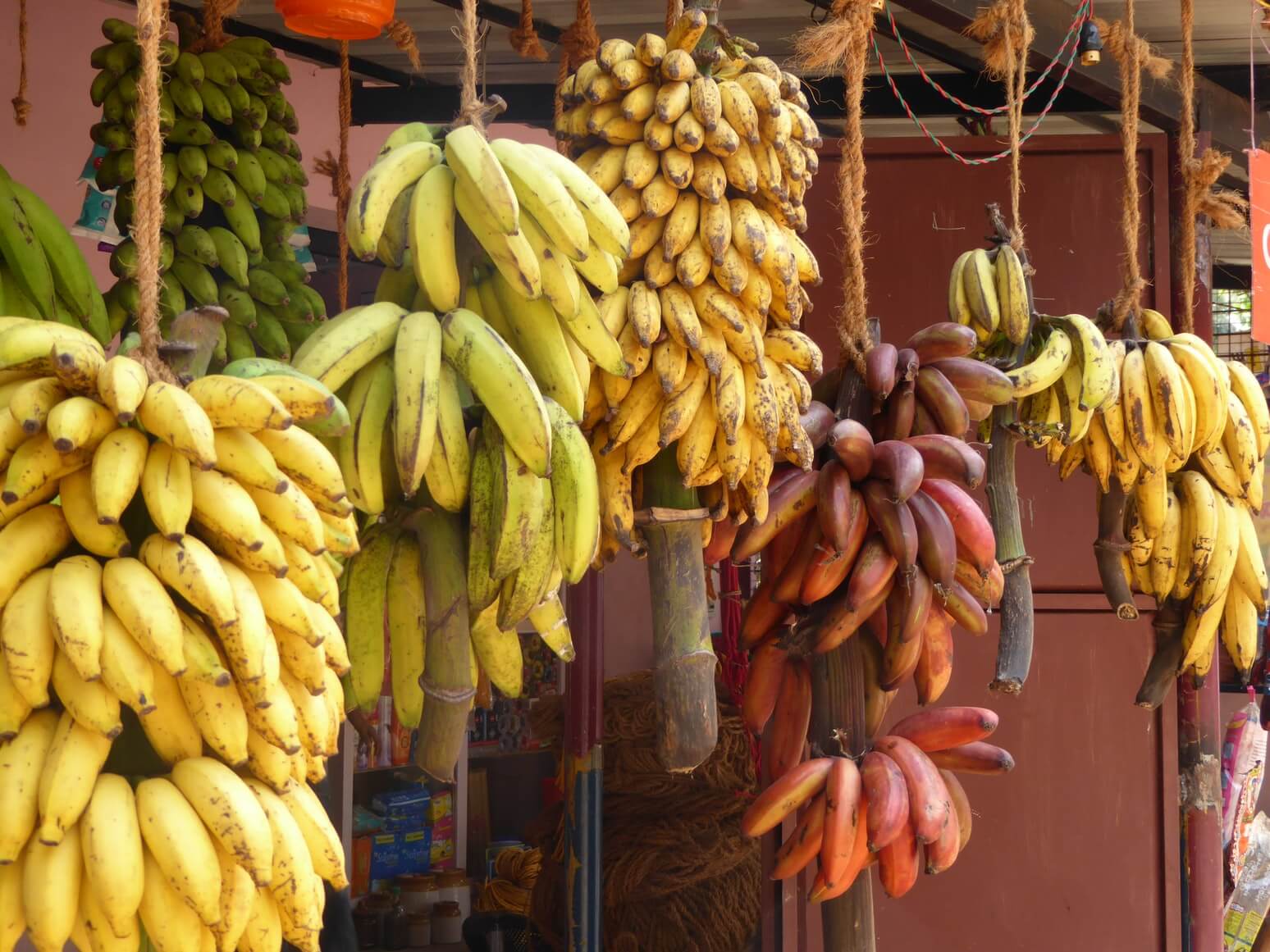When Did Coffee Become Popular? A Brief Coffee History

In 500 years, coffee made its way from a premium luxury item only known in Arabia to a worldwide phenomenon consumed by billions of people daily. Let’s explore coffee history and how it became popular.
Coffee culture existed since the beginning—a privilege of the intellectual elite at first. It became a mass product in the 19th century thanks to industrialization. As the mass market grew and the new advertising possibilities appeared, coffee became the world’s leading beverage.
How Africa Gave the World Its Favorite Drink
Chances are, your coffee-consuming habit goes as far back as you remember your adult life. Everyone and their uncle seems to be obsessed with it. 64% of grown-up Americans drink coffee, consuming 2.7 cups a day on average. That makes almost 5 kilograms of coffee beans a year per person.
This figure pales compared to European Nordic countries: with Swedes consuming up to 11 kg per capita in a year, and the Finnish—about 12.5. The world’s top 10 coffee-consuming nations are all in Europe.
As you look at these numbers, it’s easy to imagine that coffee has always been around. However, its surge in popularity happened only in the 20th century. The earliest reliable written sources point to 15th-century Yemen, from which the drink spread to the Middle East and the rest of the world.
Historical accounts and evidence suggest that we drank wine, beer, and even chocolate as far back as in the neolithic period. On the other hand, the coffee culture is much younger, and its history—what we know of it so far—is much more elusive.

Sources about coffee’s origins (at least those known and described in the Western literature) are largely myths or legends. The most famous one tells about a goatherder named Kaldi in what is modern-day Ethiopia.
According to the myth, Kaldi tended to his herd in highlands near an Abyssinian monastery when he noticed one of his goats jump around wildly. The creature was almost dancing and bleating loudly. Kaldi suspected that a small shrub with bright-red berries was responsible for the goat’s excitement. Trying the berries himself, Kaldi also felt the coffee cherries’ energizing effect.
Amazed by this discovery, the goatherder decided to bring it to the monks of the nearby monastery. The discovery, however, was not met with enthusiasm, and one of the monks even threw the beans into the fire, calling them “the Devil’s work.” By doing so, he unwittingly roasted them, producing an enticing aroma that attracted other monks.
As the monks tried to preserve the burned beans in a pitcher with hot water, they brewed the coffee. Then, enjoying the energizing effects, they vowed to drink it daily to aid in their religious devotion. Coffee was supposed to keep them awake during prayers. Most accounts date Kaldi to 850 CE, but this legend did not appear in writing until 1671. Obviously, it’s hard to say how much of it is true. In any case, many coffee shops and coffee roasting brands nowadays use the words “Goat” and “Kaldi” in their labels. Ethiopia’s biggest coffee chain is called “Kaldi’s Coffee.”
Another myth is related to an Islamic Sufi mystic from Yemen but also places the plant’s origin in Ethiopia. Ghothul Akbar Nooruddin Abu al-Hasan al-Shadhili traveled through Ethiopia on a spiritual journey. One day he encountered a flock of very energetic birds pecking at the red cherries of a coffee plant. The road-weary pilgrim tried these fruits and was amazed at their stimulating effect.
Ultimately, both legends deal with the coffee’s discovery in the Middle East; historical evidence suggests that coffee plants had been used before in various cultures throughout the African continent. According to the tales and traditional practices of Oromo people in Ethiopia, their distant ancestors used to gather ripe cherries from wild coffee plants. Grinding them in a stone pestle with a mortar, Oromo warriors mixed the mashed seeds and pulp with animal fat into small balls to consume for sustenance and stimulation.
However, no historical record so far can help us pinpoint coffee’s actual place of origin. But as the rest of the world witnessed the construction of the Pyramids, the Trojan War, and the rise and fall of the Roman Empire, the coffee plant grew wild and domesticated in various places—albeit unknown in Europe and the Middle East.
The Beginning of Coffee History: How the Arab World Laid the Foundation
Somewhen before the 15th century, coffee made it to Yemen, and the port of Mocha became one of the most important places in coffee history. Until the 17th century, it remained the heart of the coffee trade, selling homegrown and imported coffee beans up North: to the Middle East and eventually Europe. Roasted coffee beans lose their fertility. Yemeni merchants sold their coffee roasted, and the authorities prohibited exporting a live plant under the death penalty. That way, they managed to keep the market effectively monopolized for about 200 years.

Coffee’s rise to popularity has a lot to do with Sufi mystics, who imported the plant from Ethiopia and promoted its trade. The stimulation effect proved helpful in their long prayer and meditation sessions.
Sufism is a religious practice that explores the phenomenon of mysticism within Islam. Sufis found a lot of appreciation for a new drink in concentration and even spiritual trance. They called it قهوة (Qahwa)—“brew.” Before that, people may have used the world for mulled wine, as it was satiating and intoxicating, but coffee quickly established itself as a superior option for Sufis. The Yemeni “qahwah” later became the Turkish “kahveh,” then the Dutch “koffie,” and finally “coffee” in English.
By 1414, the brew spread to Mecca, and by the early 1500s—to Egypt. A cluster of coffee houses emerged in Cairo around Al-Azhar University. In 1554, coffee was already known in Syria and the Ottoman Empire.
The new drink’s comparison to wine created quite a negative reputation in the Muslim world. Islam strictly forbids alcohol, and religious authorities in Cairo, Mecca, and Istanbul repeatedly attempted to ban coffee. The custom of passing a coffee pot around a circle of men—much like a pitcher of wine in the winery—only strengthened the harmful association.
This was quite a problem for the authorities, as Christian monasteries in the Muslim grew in number. The monasteries sold wine, and the culture of drinking wine and writing poetry surprisingly thrived in the Muslim world. Course block
Coffee houses—originally called qahveh khaneh— became a place where men could meet to talk, listen to poetry, play chess and other games. So it was no surprise that coffee houses became centers of intellectual life, rivaling the mosques as a meeting place. They were often called ‘schools of the wise’ because people could gossip and learn many things there. In several centuries, the same thing will happen to coffee houses in Europe.

The authorities, of course, were not happy with the places for people to speak freely about everything, including politics and religion. However, all attempts at banning the drink failed; in 1524, Grand Mufti of the Ottoman Empire Mehmet Ebussuud el-İmadiin issued a fatwa that coffee, in principle, was okay.
As thousands of pilgrims from all over the world visited the holy city of Mecca, the knowledge of this “wine of Arabia” began to spread.
The Ottoman Empire: Gateway to Europe and the Spread of Coffee Culture
The Sufis were not concerned with material gains and worldly matters, so they did not bother to extract luxurious profits from the coffee trade. But as the Ottoman Empire grew in size, conquering vast territories, new immense regions opened up to the enticing and stimulating drink.
By the early 1600s, coffee was highly fashionable among Ottoman imperial officials and the military. The first coffee house in Istanbul opened in the 1550s—almost a century earlier than in Europe. And it’s become an important part of coffee history.

The imperial prestige associated with the drink was crucial in its spread across the Ottoman realm. As the Empire held its newly acquired territories firmly, the trade routes for coffee export became safe.
From the port of Mocha, which was still importing from Africa and growing its own beans in incredible quantities, coffee spread to Europe. There were several entry points: for instance, the Knights of St. John captured many Muslim slaves after the Great Siege of Malta and forced them to grow coffee on the island. But Venice was by far the most important of the sea routes.
The Republic of Venice was famous for its merchants: they traded with North Africa, Egypt, and the Middle East, importing various African goods, including coffee. The first European coffee house opened in Venice in 1645. The first England’s coffee houses started appearing in Oxford in the early 1650s, and France followed in the 1660s.

As coffee houses sprang up around the continent, the drink once again faced mixed reception from the religious authorities. There’s a historical anecdote about Pope Clement VIII, whom his priests asked to ban coffee. Just as in the story of Kaldi, the priests dubbed it “the devil’s work.”
However, as the Pope tasted the brew, he proclaimed that leaving such a delicious Satan’s drink to infidels would be a pity. It is said that he found the solution to this theological conundrum by baptizing the drink.
Apart from the sea route to Venice, Europe got to know coffee in another pretty unexpected way. In 1683, the Holy Roman Empire beat the Ottomans in the Battle of Vienna. Jerzy Franciszek Kulczycki, a Polish diplomat of Ukrainian descent, was credited as the city’s savior. The council of Viena offered him to take anything from the spoils of war, and he chose 300 bags of coffee beans. He mixed coffee with sugar, milk, and honey to promote the new drink, creating a now-famous melange.

Over time, Vienna earned a reputation as the world’s capital of cafés, which it prides itself on to this day. Kulczycki was named patron of Viennese café owners.
Paris, another famous metropolis, was introduced to coffee more peacefully. Between July 1669 and May 1670, the Ottoman Empire sent an ambassador to the King of France, who firmly established the coffee-drinking custom among Parisians.
The British and Dutch: Competing to Control the World’s Hottest New Brew – Coffee
In the 1600s, Mocha remained pretty much the only trading port from which coffee went to Europe. At first, European traders of the British and the Dutch East India Companies considered coffee a secondary commodity, focusing on spices: such as cloves, pepper, and nutmeg.
However, after their first recorded visit to Mocha in 1609, the English merchants sought a prolific relationship with the Imam of Yemen. However, their initial success turned sour when the English captain was imprisoned and several of his crew members executed. It took more than four years for the English to reach an agreement and establish a trading post in the city in 1618. The traders of the East India Company were the first Europeans to buy coffee directly from Mocha and sell it to their partners in India and Persia.

Meanwhile, the Dutch, who were the main competitors of the English, were thinking one step ahead. In 1616, they managed to acquire a coffee plant.
As we already know, Yemeni merchants and officials were extremely protective of the coffee plant. They did not allow for a single fertile seed to leave the country. However, a Dutch merchant named Pieter van den Broecke managed to obtain some of the coffee bushes from Mocha and bring them to the Royal Botanical gardens of Amsterdam. In 1658, these bushes were used to plant the first coffee plantation in Ceylon (now Sri Lanka). For nearly half a century, their idea did not bear tangible results. Coffee plants take a notoriously long time from germinating to producing the fruits; moreover, the first harvests in Ceylon were not particularly good. Only when the Dutch established a plantation in Java in 1699, they reached true success. Later, Dutch plantations were also established in Sumatra and Celebes.
However, the Dutch did not bet everything they had on the plantation gamble: in 1640, they became the first to bring coffee back home. The earliest coffee shops in England got the beans from Amsterdam: the first shipment from the English East India Company would arrive in London only in 1657.

Just like in the Middle East before, coffee houses became a popular meeting place for the nation’s educated elite. One of the best locations for coffee houses was the city of Oxford, with its unique combination of exotic scholarship interests and vibrant experimental community. It was an important place in the development of coffee culture.
The first coffeehouses established in Oxford were known as “penny universities,” as they offered an alternative to structural academic learning. These establishments would charge a penny for admission; two pennies were enough to get a dish and a newspaper. Additionally, reporters went around to the coffeehouses announcing the latest news.
For the remainder of the 17th century, Mocha would hold firm in their coffee production monopoly, with an estimated 20 000 tons of beans sold out of the port each year. But the city was fighting a losing battle.
In 1721, 90% of Amsterdam’s coffee imports came from Mocha, whereas by 1726, 90% were from Java. Sixty years after the Dutch, the British also started their own coffee plantation in India.
How Coffee Went Global: European Coffee Culture History
With the age of colonization, European markets exploded with three beverages:
- Coffee
- Hot chocolate (brought by the Spanish from the Americas in 1528)
- Tea (first sold in Europe in 1610)
The French East India Company (Compagnie française pour le commerce des Indes orientales) joined the coffee game at the beginning of the 1700s. They established their first plantations on the Isle of Bourbon off the coast of Madagascar in Africa.
However, the real deal for the emerging French coffee trade was the colony of Martinique in the Caribbean. In 1720, Gabriel de Clieu, a French naval officer, allegedly cut a branch of the royal coffee tree in the dead of night after King Louis XV refused to allow the cutting.

The story goes that he sailed to Martinique with the plant encased in a glass container, fighting off pirate raids, exposing Dutch spies on board, surviving a deadly storm, and giving the plant his own ration of water when the supplies ran low. True or not, a coffee plantation on Martinique yielded unprecedented harvests. At one point, this small island managed to supply more coffee on its own than the entire country of France could consume.
Cheap slave labor made growing coffee in the New World enormously profitable. Soon, plantations appeared in several other places across the Americas. Supposedly, the original Martinique tree descendants were also planted in Santo Domingo, Guadeloupe, and other colonies. Botanists traced their origin to the Ethiopian variety of coffee.
French colonial plantations used a lot of African slave laborers. The conditions in which the slaves were forced to work were dreadful; the continuous pressure to ramp up production became one of the factors of the Haitian Revolution (1791–1804). After that, the coffee industry has never recovered on the island.
Brazilian coffee, one of the most famous varieties globally, also came from the French colonies. Francisco de Mello Palheta, a Portuguese Lieutenant on a diplomatic mission to French Guiana, sought to smuggle out the prized coffee seedlings. At first, he failed. Finally, he managed to seduce Madame D’Orvilliers, the wife of the French governor. Upon Francisco’s departure, she gave him a bouquet of flowers with coffee seeds hidden inside at a closing banquet. In time, Brazil has become one of the biggest coffee producers in the world.
The settlers of the English colonies could enjoy coffee as early as 1607 when they brought it to Jamestown. Yet, American people became avid coffee-drinkers only in the 1770s.

The conspirators of the famous Boston tea party, which took place in 1773, planned their deed at a coffee house named Green Dragon Tavern. Perhaps, after these events, Americans looked away from the quintessentially British tea and embraced a new drink.
Coffee plantations continued to spread in the Americas. After the Dutch in Surinam, the French in French Guyana, and the Portuguese in Brazil, the British brought coffee to Jamaica in 1730. Nowadays, one of the most expensive varieties of coffee is grown there in the Blue Mountains. After 1893, several coffee plants were transported from Brazil to Kenya and Tanzania (Tanganyika). These places are not at all far away from the starting point of Ethiopia— which meant that the plant had completed a transcontinental journey.
By the 1830s, Brazil became the world’s largest producer, followed by Cuba, Java, and Haiti. By the late 1840s, the overproduction in these countries caused a significant decline in world coffee prices. However, afterward, the prices began a steady climb until they reached their peak in the 1890s.
Lacking inland transport and population, Brazil could not expand production further. As the prices kept going up, neighboring countries began cultivating coffee. In the latter half of the 19th century, Mexico and most Central and South American countries—Guatemala, El Salvador, Colombia, and others—were involved in growing coffee. Unfortunately, almost every one of them displaced and exploited large indigenous populations in the process.
The working conditions on the plantations were harsh. Just like before in Haiti, this led to many uprisings, coups, and suppressions of peasants.

For instance, Guatemala, which started to produce coffee in the 1850s, had many natural resources but severely lacked the workforce. To solve this problem, the government forced indigenous people to work the fields, which created a strain between the Guatemalans of European descent and the indigenous populations, which is still felt today.
Though Jesuits introduced coffee in Colombia as early as 1723, civil strife and revolution did not allow large-scale production. Following the “Thousand Days War” from 1899 to 1903, the newly established peace saw Colombians turn to coffee as their salvation. The establishment of railroads and the opening of the Panama Canal in 1914 permitted exports from Colombia’s previously unreachable Pacific coast.
From 1905 to 1915, Colombia managed to double its exports of coffee. Whereas Brazil failed to control its overproduction and lower the quotas, Colombian coffee became a popular alternative for American and European consumers.
Unlike the Americas, India knew coffee not through colonization but through the efforts of a man named Baba Budan in the 17th century. Upon completing his pilgrimage to Mecca, Baba Budan smuggled a sack of fertile, unroasted beans strapped across his abdomen. He brought those seeds to India and planted them in the hills of Chikmagalur, Karnataka, in 1670. For nearly two centuries, coffee was cultivated mostly by private owners and small farmers: the first large-scale plantation in India would open only in 1840.

As British conquered the Indian subcontinent in the mid 19th century, they increased the number of plantations. Coffee quickly spread through the country.
Becoming Number One: The Rise of Coffee as the World’s Most Consumed Beverage
Aiming for protectionism, colonial governments insisted on high taxes, maintaining coffee as a luxury. As a result, peasants and workers tended to drink chicory if they drank any hot beverage at all.
Curious about how other everyday flavors gained global love? Ketchup, wine, and even the banana all have fascinating histories. And if you’re a fan of bold sensations, here’s why we crave spicy food.
After the Napoleonic Wars, however, the production in newly independent countries made the beverage available to urban workers and even occasionally to rural residents. Brazil produced record amounts of coffee, and its demand in the United States and northern Europe skyrocketed.

In the 19th century, global coffee consumption grew more than 15 times, with the United States responsible for almost half of that. Several features of the industrial revolution contributed to this upsurge.
In Latin America, coffee was still cultivated and harvested by hand—and by slave labor in Brazil until 1888. Transportation was one of the costlier issues and was still done by mules. In fact, 20% of male slaves were mule drivers, and transportation took one-third of the final price. Railroads and steamships changed the situation dramatically, and many wealthy coffee farmers in Brazil also invested heavily in railroad stocks.

The railroad meant that the coffee was better, and more importantly, cheaper, as more fertile lands were now accessible in the interior. This also meant that once slavery was abolished in 1888, Brazil could become the only country to attract millions of European immigrants to work in semitropical agriculture.
The policies of the US government helped to increase coffee consumption. The United States was the only major market to import coffee tax-free. As per capita consumption grew, so did the import. By the end of the 19th century, the USA accounted for 40% of the world’s coffee consumption (the figure would grow to over 60 percent after World War II). The rest was almost entirely Europe, especially northern countries: Belgium, Germany, France, the Netherlands, Sweden, and Denmark.
By this time, coffee became an accepted part of the working class’s breakfast. Later it also became common to drink coffee at lunches, coffee breaks, and dinners. The demand for caffeine stimulation grew in the regimented time of the urban industrialized societies. The US and northern European consumption would continue to rise, with some fits and starts, until the 1960s.
The global coffee market, which had long been practically a monopoly (first Yemen, then St. Domingue, and finally Brazil), became a market with many suppliers and just a handful of significant buyers. Coffee was one of the few major internationally-traded commodities in the nineteenth century. Though the British did not drink as much as others, they would profit greatly in the 19th century: at first, from the coffee-related slave trade, then from the transportation, export tariffs, insurance, and trade, which they dominated until the 1930s. Great Britain was the only Western European power to reduce per capita coffee consumption at the time. Part of the reason was the possibilities they saw in exploiting the Chinese and then the Indian tea trades. Some claimed that bourgeois England preferred to stay at home and drink tea rather than frequent coffee houses. Others mentioned the British taxation policy that protected the East Indian Company’s tea monopoly. However, the British significantly upped their coffee-drinking levels in the last decades of the 20th century—thus, it is doubtful they had any genetic predisposition against coffee.
The freewheeling coffee market began to change in 1870 when a submarine cable connected South America to New York and London by telegraph. As a result, information about prices, supply, and demand became internationally homogeneous.
New York Coffee Exchange was created in 1882 to prevent speculation. Coffee was a pioneer in globalization.
The 20th century was the time of innovation. New forms of coffee were invented like decaffeinated in 1903 and instant coffee in the 1940s. The modern espresso machine was designed in Italy and perfected by Achilles Gaggia in 1946. It used high pressure to prepare the drink, which created a uniquely strong brew. This machine became known worldwide after he brought it to London in the 1950s.

In 1956, instant coffee became a hit due to the ingenuity of advertising. The commercial break on TV was supposedly too short to brew a cup of tea, so companies like Nestlé and General Foods advertised instant coffee as a faster solution.
A trendy drink before WWII, tea was fighting a losing battle for popularity. The British government had to take over the tea trade during WWII because of rationing, which continued until 1952. The biggest tea-drinking nation before the war, the British never went back to drinking as much tea as before.
At the same time, coffee culture was gaining prominence with the advent of Italian-style espresso, americano, cappuccino, and other drinks. People brewed most of the coffee at home—for the first time in coffee history.
Before the first Starbucks opened in the 1980s, the foundations of the coffee culture as we know it today had already formed.













